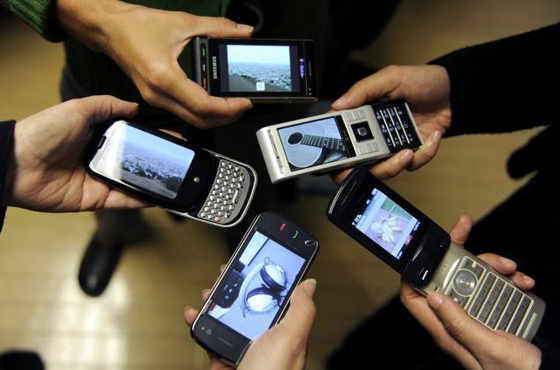Mobile subscriptions in the Middle East grew nine per cent year-on-year — or eight million — to 284 million in the first quarter of this year, mainly fuelled by strong growth in smartphones.
According to the latest Ericsson’s Mobility Report, one in every 16 mobile subscriptions globally was from the Middle East. By the end of 2018, around 700 million mobile subscriptions are to be added in the Middle East and Africa.
The number of mobile subscriptions worldwide grew approximately eight per cent year-on-year during the quarter. By the end of 2018, total mobile subscriptions are expected to reach 9.1 billion.
”Smartphones accounted for around half of all mobile-phone sales in the quarter, compared with roughly 40 per cent for the whole of last year. In the UAE, smartphones constituted 44 per cent of total mobile handsets in 2011,” Anders Lindblad, President of Ericsson Middle East, said in an emailed statement.
The report said that mobile-broadband subscriptions grew even faster over this period (at a rate of 45 per cent year-on-year), reaching around 1.7 billion.
The 2G subscriptions grew by around 30 million while 3G subscriptions by 60 million and 4G LTE by 20 million.
The Middle East and Africa region was dominated by 2G in 2012. By 2018 it will have the largest share, driven by demand for low cost phones. The region is diverse, so there will be large differences between developed and less developed areas.
Bundled offers
According to an industry expert, the telecom operators in the region are offering value-added services and good bundled offers to fuel growth in subscribers apart from cutting mobile tariffs.
”Smartphone sales are set to overtake feature phone sales globally. Out of the total shipments of 1.9 billion units in the MEA, smartphones are going to contribute 52.63 per cent to the growth by sales of around one billion by the end of this year,” said Annette Zimmermann, Principal Analyst at Gartner Deutschland GmbH.
Although smartphones accounted for a mere 20.54 per cent of the total sales of 193.24 million in 2012 in the region, fewer than 40 million units, they are seen setting a scorching pace.
Zimmermann said that smartphones are expected to contribute more than 35 per cent to the total sales of 215 million units this year. Smartphone sales are expected to be around 77 million.
The Ericsson report also confirmed that mobile-data traffic will continue to grow significantly in the coming years, a trend driven mainly by video. Globally, data traffic is expected to grow 12-fold by the end of 2018.
Increasing usage is driven by continual growth in the amount of content available as well as the improved network speeds that come with HSPA and LTE development.
LTE rollout
Total global smartphone subscriptions hit the 1.2 billion mark in 2012 and are due to reach 4.5 billion by the end of 2018.
As of March 31, 2013, there are more than 14 million mobile subscribers in the UAE and UAE’s mobile phone penetration is of the highest in the world.
Etisalat had 7.4 million subscribers as of March 31 and du had 6.64 million subscribers.
“LTE rollout has already started in some parts of the Middle East, while it is still in the early stages in other parts of the region. However, with the findings of today’s report, LTE is clearly the technology of the future for the Middle East. Globally, LTE services will be available to about 60 per cent of the world’s population in 2018 and we expect LTE subscriptions to exceed one billion in 2017, driven by more capable devices and demand for data-intensive services such as video,” said Lindblad.
Gulf News
5 June















































































